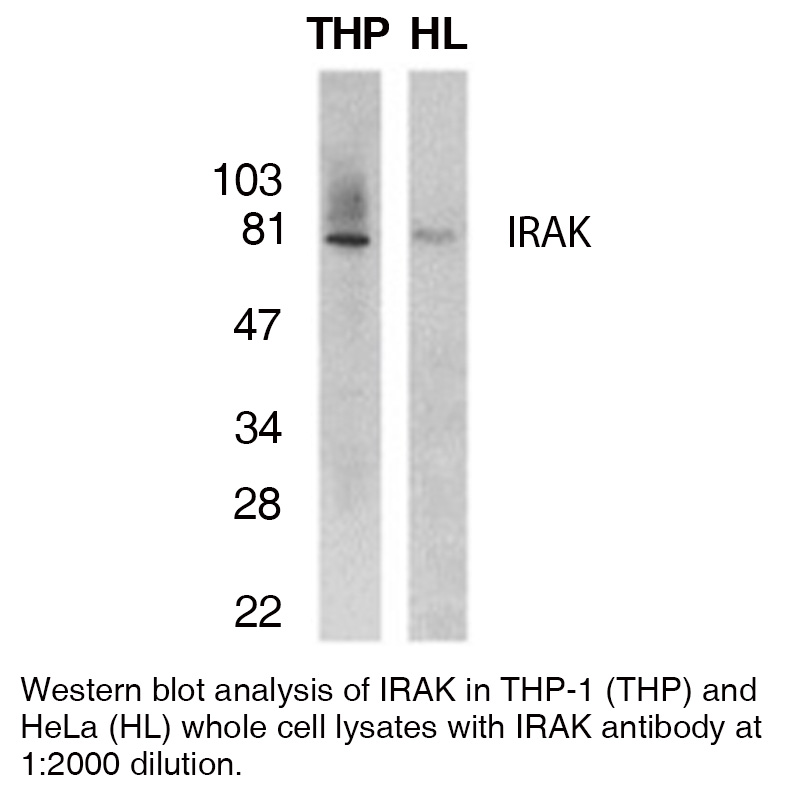Anti-Human IRAK
| Code | Size | Price |
|---|
| LEI-I-307-20ug | 20 ug | £199.00 |
Quantity:
| LEI-I-307-0.1mg | 0.1 mg | £591.00 |
Quantity:
Prices exclude any Taxes / VAT
Overview
Host Type: Rabbit
Antibody Clonality: Polyclonal
Regulatory Status: RUO
Target Species: Human
Applications:
- Immunohistochemistry- Paraffin Embedded (IHC-P)
- Immunoprecipitation (IP)
- Western Blot (WB)
Shipping:
Ambient
Storage:
This polyclonal antibody is stable for at least one week when stored at 2-8°C. For long term storage aliquot in working volumes without diluting and store at -20°C in a manual defrost freezer. Avoid Repeated Freeze Thaw Cycles.
Images
Further Information
Concentration:
0.5 mg/ml
Conjugate/Tag/Label:
Purified No Carrier Protein
Format:
This polyclonal antibody is formulated in phosphate buffered saline (PBS) pH 7.4 containing 0.02% sodium azide as a preservative.
Formulation:
This polyclonal antibody is formulated in phosphate buffered saline (PBS) pH 7.4 containing 0.02% sodium azide as a preservative.
Immunogen:
PN:I-321
Long Description:
Nuclear factor κ B (NF-κB) is a ubiquitous transcription factor and an essential mediator of gene expression during activation of immune and inflammatory responses. NF-κB mediates the expression of a great variety of genes in response to extracellular stimuli including IL-1, TNFα and LPS. A serine/threonine protein kinase associated with IL-1 receptor (IRAK) and its homologue mouse pelle-like protein kinase (mPLK) were identified recently. IRAK is associated with the IL-1 receptor subunits IL-1RI and IL-1RAcP after IL-1 binding and serves as a signaling molecule to mediate IL-1 response. IRAK mediates a signaling cascade leading to NF-κB activation by members in IL-1 family including IL-1 and a novel cytokine IL-18 (also termed IGIF).
Target:
IRAK
References
1. Cao, Z. et al. (1996) Science 271:1128 2. Trofimova, M. et al. (1996) J. Bio. Chem. 271:17609 3. Jianing, H. et al. (1997) Proc. Natl. Acad. Sci. USA 94:12829 4. Robinson, D. et al. (1997) Immunity 7:571



